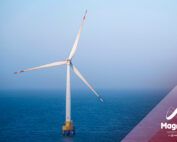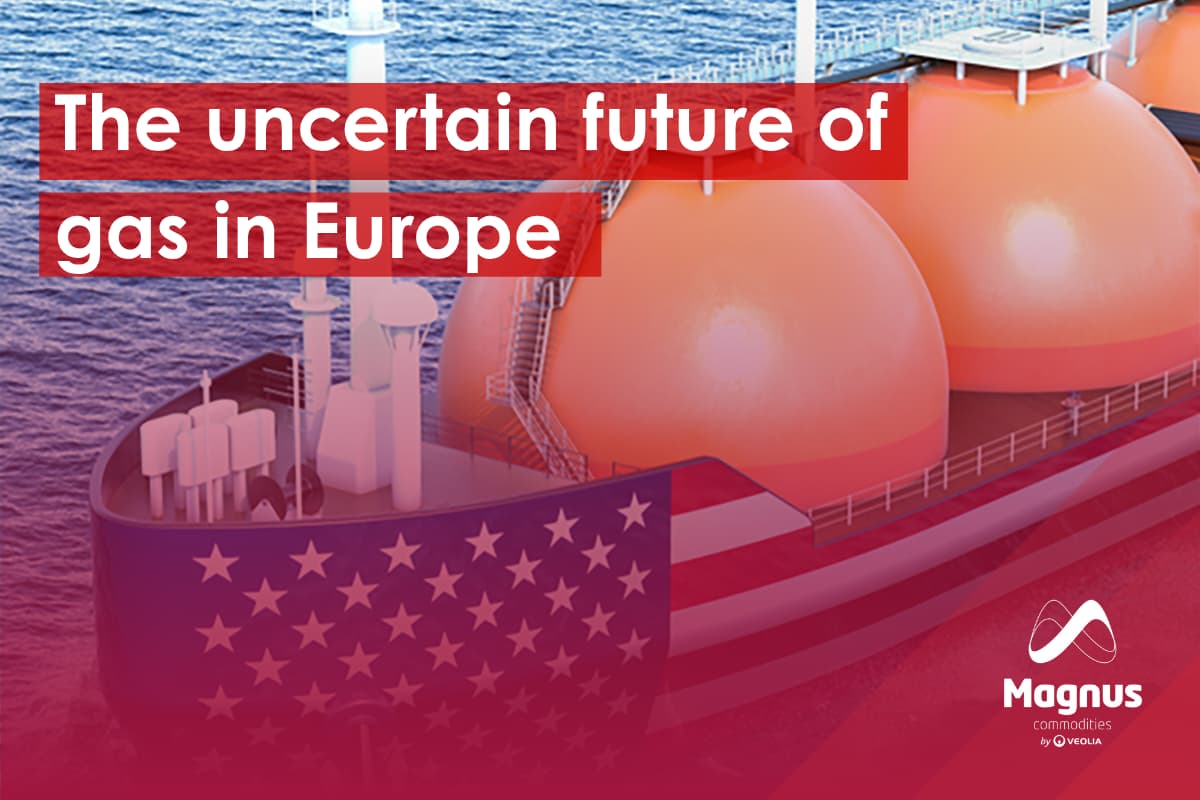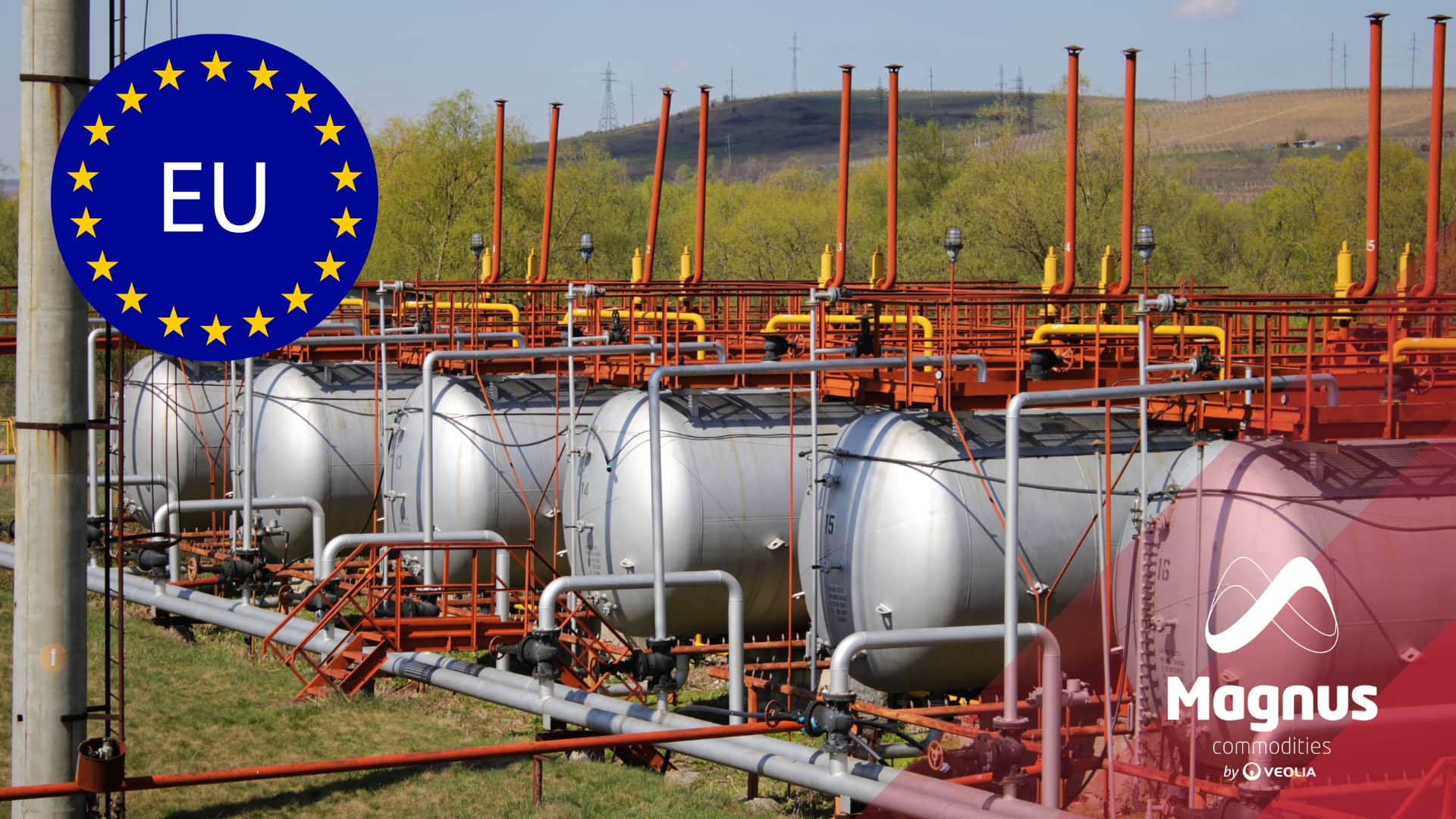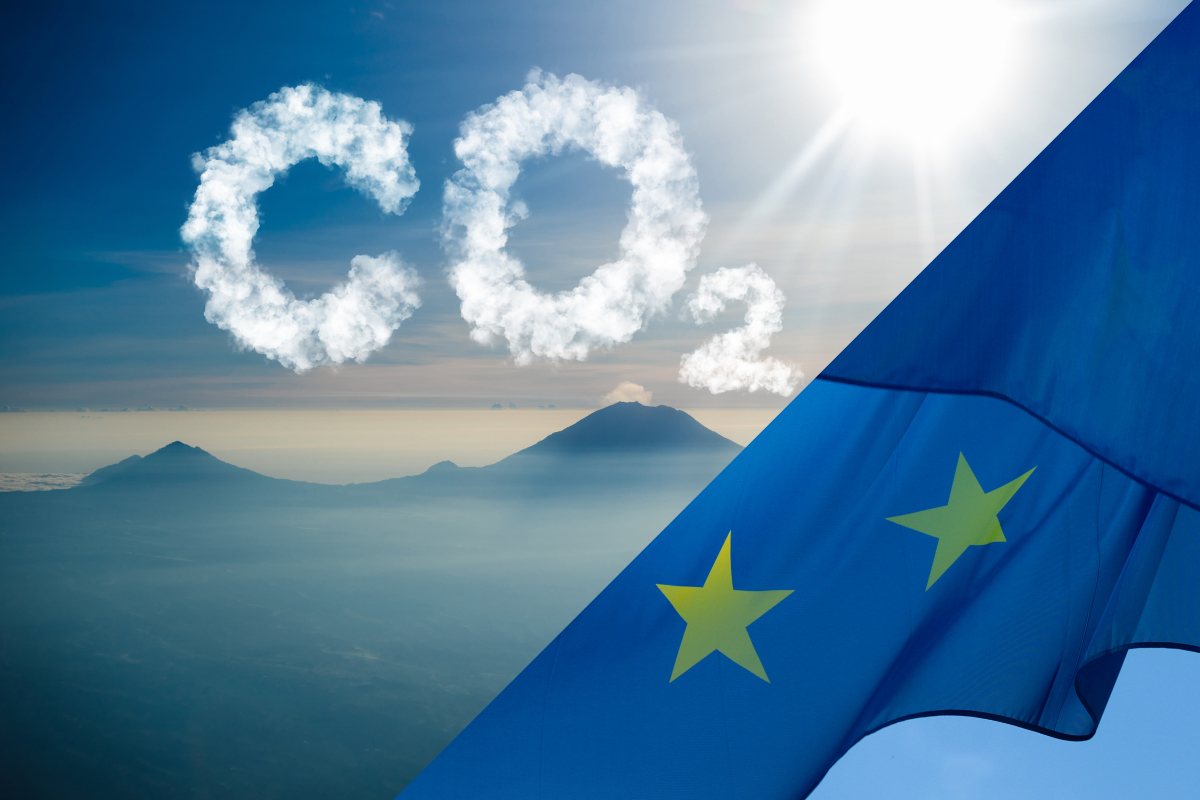
Nuclear power has been playing a key role in the production of continuous, safe and CO₂ emission-free electricity for 70 years. However, in 2019, Spain decided to set a timetable for the progressive closure of its nuclear power plants between 2027 and 2035, starting with Almaraz.
This decision opens the door to many questions: what is the purpose of this plan? Will there be enough renewable production to replace nuclear? What will happen to electricity prices? How will the energy landscape change without a firm source such as nuclear? Are there viable alternatives?
This blog seeks to answer these questions, provide context and, above all, invite critical reflection on the present and future of the Spanish electricity system.
What is the weight of nuclear power globally?
When we talk about nuclear power, it is easy to imagine that we are talking about large power plants that emit a lot of smoke, but… How much weight do they have globally? And why do so many countries continue to use them or even want to expand them?
Let’s start with the data. Currently, there are 440 nuclear reactors in operation and 66 more under construction, in 32 countries, according to World Nuclear Association data. In terms of production, in 2024 nuclear power generated a total of 2,694 TWh worldwide, equivalent to approximately 10.5% of the electricity produced in the world that year, according to data from the Foro Nuclear.
This makes it clear that, far from disappearing, nuclear power continues to play a key role in the energy plans of many countries.

Source: Own creation with data from WNA (2025).
In the European Union, nuclear energy also plays an important role in the energy mix. France is the clear leader in this source of generation, with 57 reactors in operation, producing more than 60% of its electricity.
Other countries are also firmly committed to this technology, such as Finland, with 4 reactors that generate 43% of their electricity; Hungary, also with 4 reactors that contribute 49%; and Slovakia, which operates 5 reactors and obtains 61% of its electricity generation from them.
What about Spain?
Currently, 7 nuclear reactors operate located in:
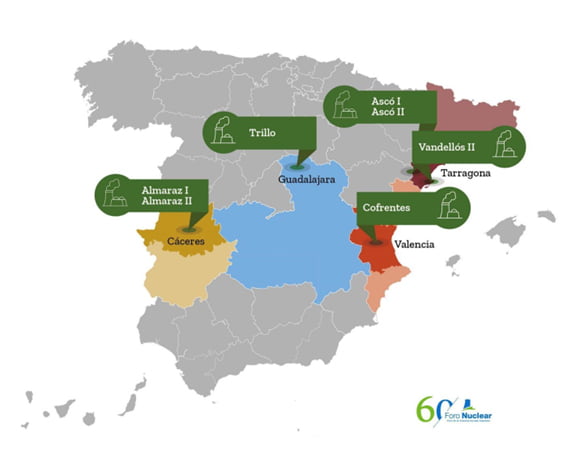
Source: Foro Nuclear (2025).
According to the Foro Nuclear’s Nuclear Results Report from 2024, these plants generated 52,390 GWh, which represented 19.98% of the electricity produced in the country. This is not a minor figure: nuclear energy has been occupying around 20% of the Spanish electricity system for 13 consecutive years.
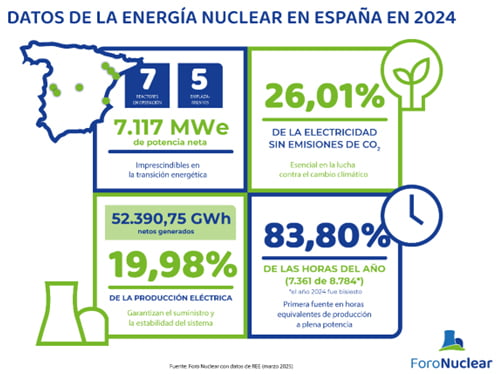
Source: Foro Nuclear with REE data (March 2025).
But… Why do so many countries continue to bet on it?
The answer has to do with its role in the energy transition. Many countries believe that nuclear power cannot be excluded from the energy mix, at least in the short and medium term. Why? Because it does not emit CO₂ during operation, produces energy continuously and contributes stabilizing prices and supply.
In the European Union, through the European Green Pact, adopted in 2019, the goal has been set to achieve climate neutrality by 2050 to reduce polluting emissions as much as possible. In this context, maintaining nuclear power is seen by many Member States as a key tool to achieve that goal.
Proof of this is that, in 2022, during the voting on the so called “green taxonomy”, the system that classifies which investments are considered sustainable in Europe, nuclear energy was officially included as a green source. Although Spain voted against, the measure was approved and came into force in 2023.
In addition, during COP28 in Dubai in December 2023, a total of 31 countries signed up to triple global nuclear capacity by 2050, recognizing its crucial role in the fight against climate change and in the energy transition, especially as renewables and storage technologies mature.

United Nations Climate Change Conference (COP28). Source: Wikipedia
Spain, however, did not join this agreement.
But why? What is the purpose behind the progressive closure of nuclear power plants? Given that the key period is between 2027 and 2035, it is essential to understand the strategy driving this decision.
The objective behind the closure of nuclear power plants
The progressive closure of nuclear power plants is part of the National Integrated Energy and Climate Plan 2021-2030, better known as PNIEC, the strategic document with which the country seeks to move towards a sustainable energy model.
This plan is aligned with the European framework of the European Green Pact and responds to the commitments made in the Paris Agreement, the international treaty adopted by 195 countries at the COP21 held in 2015, which aims to limit global warming by reducing greenhouse gas emissions.
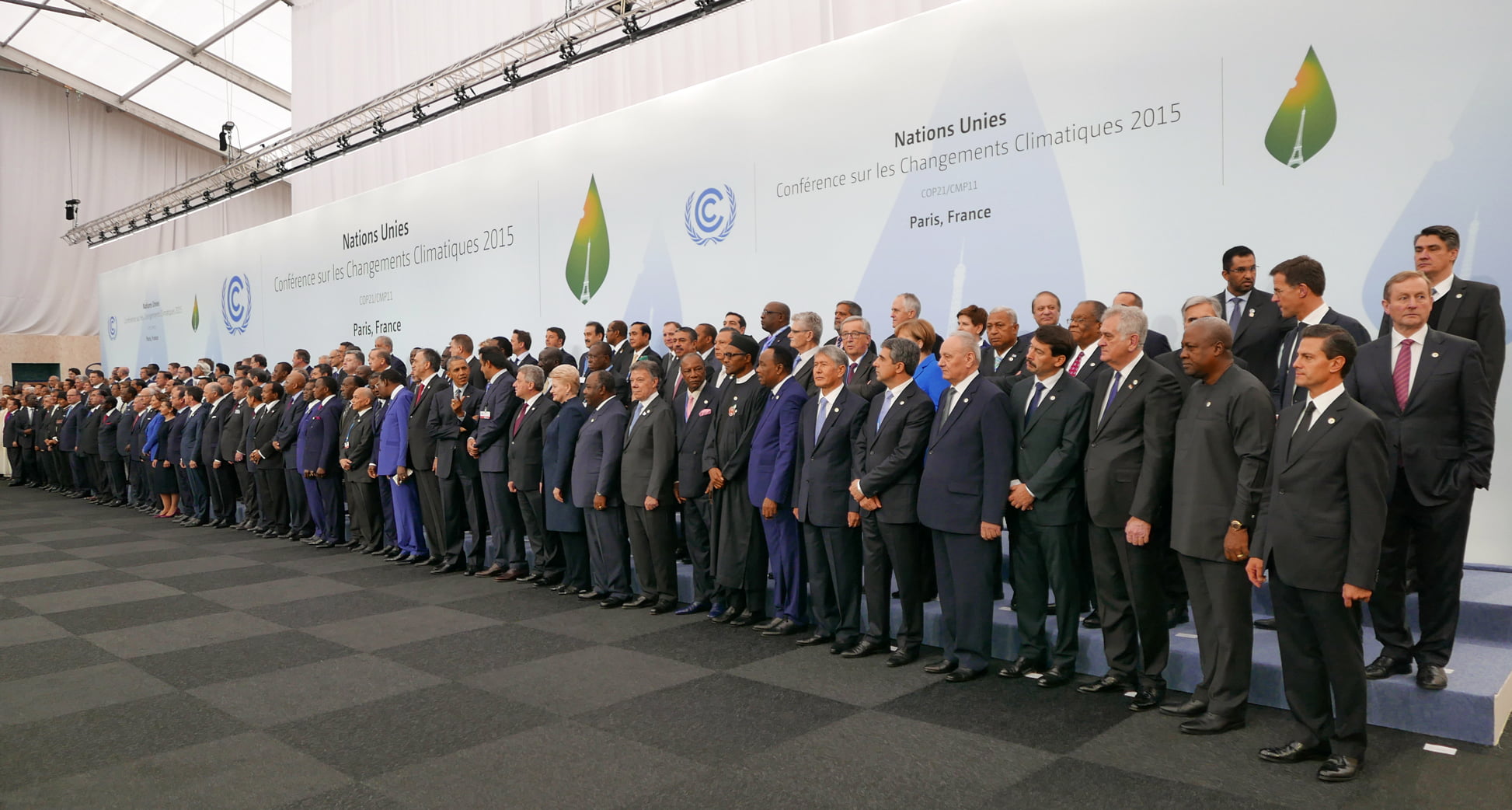
The United Nations Climate Change Conference in Paris 2015 (COP21). Source: Wikipedia.
Specifically, what the PNIEC proposes is the construction of a secure, clean and efficient energy system, with a strong commitment to renewable energy as a central pillar of the energy mix. The document establishes key commitments for 2030 such as:
- Reduce greenhouse gas emissions by 23% compared to 1990.
- Achieve a 42% share of renewable energy in final consumption.
- Achieve 74% of electricity from renewable sources.
- Decrease foreign dependence from 74% to 61%.
If these targets are achieved, Spain would be in a strong position to meet its long-term goal of reducing emissions by at least 90% by 2050 and consolidate its position as one of the pioneering countries in the EU in terms of energy transition.
To achieve the targets, the closure of nuclear power is put forward in the document as a necessary step. The idea is to progressively replace this source with advanced energy storage systems, the digitalization of electricity grids and the promotion of renewables.
Even so, the plan has generated a wide debate. The key dates for the closure of the seven reactors are getting closer and closer, and doubts are being raised as to whether security of supply can really be guaranteed without nuclear power, especially considering that in the last 13 years around 20% of the electricity consumed in the country has been nuclear.
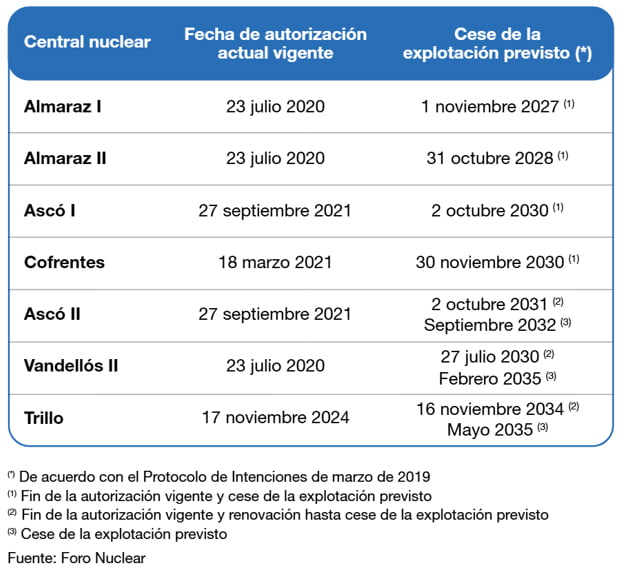
Source: Foro Nuclear. (2024). Closure timeline for Spanish nuclear reactors.
However… What is negative about nuclear energy and what advantages does it offer?
As we commented previously, nuclear energy has some key advantages: it does not emit CO₂ into the atmosphere, it has the capacity to generate electricity constantly for decades, and it does so regardless of weather conditions, such as lack of sun or wind. In addition, its production cost is relatively low, as a small amount of uranium can generate a large amount of energy. For this reason, many countries consider it a great tool in the fight against climate change and the reduction of foreign dependence on fossil fuels such as gas or oil.
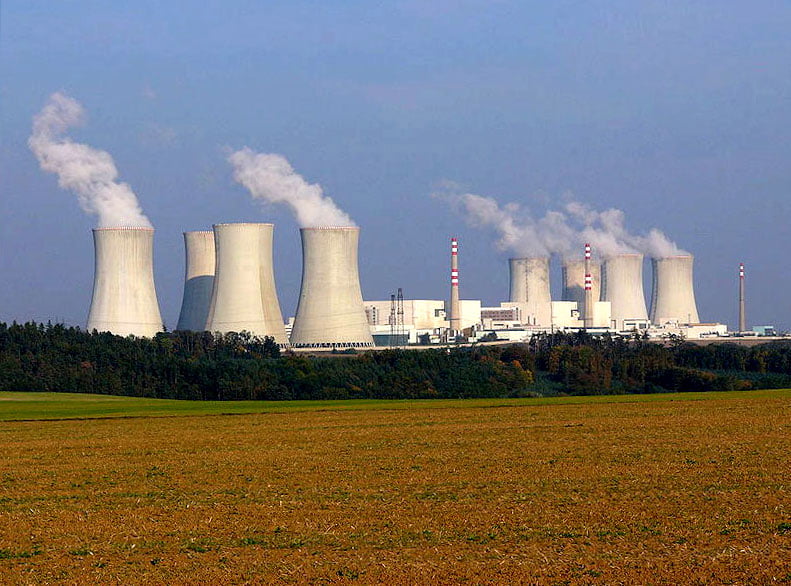
Dukovany nuclear power plant, Czech Republic. Source: Wikipedia.
However, not everything is positive; nuclear energy also has negative characteristics: electricity production using nuclear energy produces radioactive waste that can be harmful to human health and the environment. Its management requires very safe storage systems, and its preservation must be guaranteed. Although nuclear accidents are infrequent, episodes such as Chernobyl (1986) or Fukushima (2011) have shown that, when they occur, their consequences can last for decades.
In Spain, the only center authorized to store low and intermediate level radioactive waste is El Cabril, located in the province of Córdoba. This facility has been, for decades, the pillar of the national radioactive waste system. It stores not only waste from nuclear power plants, but also waste generated by hospitals, research centers and industries from more than 1,000 radioactive facilities distributed throughout the country.
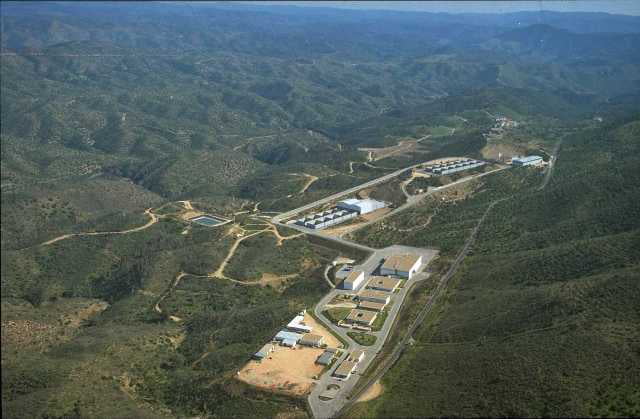
El Cabril solid radioactive waste disposal facility (El Cabril). Source: Consejo de Seguridad Nuclear
El Cabril has a confinement system using concrete cells, together with a filtering system that prevents radioactivity from being released to the outside. Subsequently, these stores are intended to be sealed and buried underground, guaranteeing their long-term isolation.
Furthermore, although uranium is a natural element, it is not renewable. For this reason, countries that do not produce it, such as Spain, depend on imports from countries such as Kazakhstan, Canada or Russia.
A nuclear-free system. Are we really ready?
It should be recalled that, according to the PNIEC, Spain plans to dispense with nuclear energy by 2035. However, it is not entirely clear that this can be achieved without difficulty.
It is true that the deployment of renewable energies is progressing strongly, however, the rest of the system is not evolving at the same pace.
The implementation of energy storage technologies remains limited, and the modernization of electricity transmission and distribution networks still presents major challenges. One of the main obstacles is the lack of a solid regulatory framework and clear economic incentives, which has slowed investment in energy storage projects. This hampers the system’s ability to absorb and efficiently manage all the renewable energy that is being incorporated.
In addition, the blackout of April 28, 2025, which affected Spain, Portugal, Andorra and part of southern France, reopened the debate on the Spanish electricity system’s capacity to respond to critical events. A clear example of this weakness is the electricity interconnection with France which, according to the PNIEC, Spain maintains an interconnection capacity of less than 3%, when the objective for 2030 is to reach 15%. This low interconnection severely limits the capacity to export or import electricity in times of emergency and calls into question the stability of the system if a firm source such as nuclear power is eliminated.
In view of this scenario, the big question is:
What energy scenario could we face?
If we reach 2035 without nuclear power in the electricity system and without having achieved the objectives of storage and modernization of the grid, we could face a complex scenario. The disappearance of nuclear power plants would imply the loss of approximately 20% of the system’s firm power, which is currently guaranteed by these active plants in the country.
In this context, Spain is likely to increase its dependence on combined cycle plants, i.e., on burning natural gas to produce electricity, especially at times when the sun or wind do not produce what is needed. The problem is even greater, since gas is more expensive and, in addition, emits CO₂, which not only makes electricity more expensive, but also forces the country to pay more emission rights to the European Union.
According to various studies, this situation could lead to an increase in the price of electricity of 23% for citizens and SMEs, and up to 35% for industrial consumers. This increase would directly affect Spain’s competitiveness compared to other European countries with a more stable and diversified energy base, making costs more expensive for industry and reducing its attractiveness as a destination for new investments.
On the other hand, foreign energy dependence would intensify, particularly with France, more than 60% of whose electricity comes from nuclear sources. In a scenario in which Spain does not have its own nuclear plants, it could be forced to import nuclear electricity from the neighboring country, provided they manage to expand interconnections. This would generate a great paradox: we close our own nuclear power plants, but we end up buying that same energy from France, which would make us indirectly dependent on the very energy we have decided to abandon.
If the objective is to reduce emissions and foreign dependence, the above scenarios seem to point in the opposite direction.
Are there alternatives to nuclear shutdown?
Faced with the possible risks of completely dispensing with nuclear energy in 2035, there are many experts in the energy sector who are putting forward alternatives or, at least, proposals to help avoid a critical scenario.
One of the main proposals is the revision of the schedule for the closure of nuclear plants between 2027 and 2035, giving it a new focus. The idea is not to depend on nuclear forever, but to allow it to accompany us during the energy transition, while renewable energy storage systems are developed, and the electricity grid is strengthened. This would make it possible to guarantee the stability of the electricity system and, in the long term, to progressively decommission plants that are no longer needed, without compromising the security of supply.
Another fundamental aspect is the revision of the tax burden borne by the nuclear sector in Spain, one of the most important reasons for its economic unviability. According to a PwC study, taxation on the nuclear fleet has increased by 70% in the last five years, and it is estimated that between 2025 and 2035 more than 40% of the costs will be linked to taxes and fees.
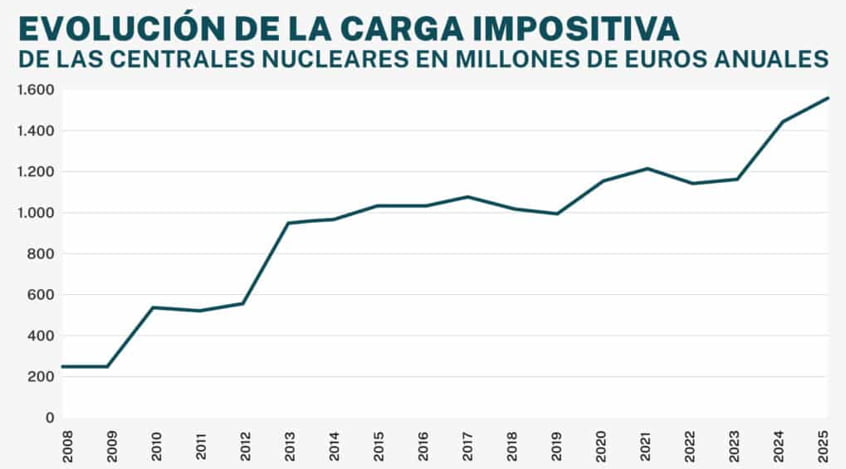
Source: Evolution of the tax burden on nuclear power plants (in million euros). La Gaceta (2025).
One of the main ones is the so-called Enresa tax, which is levied on nuclear production to finance waste management and the decommissioning of facilities at the end of their useful life.
This tax is calculated according to the number of operating reactors, so the recent announcement that Almaraz will not ask to extend its useful life beyond 2030 could have a domino effect: by reducing the number of active reactors, the distribution of costs will increase for the others, making their operation more expensive and accelerating their closure by making their maintenance unfeasible.
Technological solutions are also emerging, such as small modular reactors (SMRs), a project in which countries such as Spain, France, Poland, Russia, China and the United States are betting on a nuclear technology that is more compact, flexible and safer than the conventional one. Although they continue to generate radioactive waste, they do so in smaller quantities and are designed to reduce costs, increase security of supply and better adapt to a cleaner and more distributed energy system.
And if we talk about innovation, we cannot leave out the ITER (International Thermonuclear Experimental Reactor) project, in which countries such as France, the United Kingdom, Russia, China and the United States are participating. This is the world’s most ambitious nuclear fusion project, whose aim is to demonstrate that it is possible to generate clean, safe and practically unlimited energy by imitating the process that occurs inside the sun. If successful, it could completely change the world’s energy landscape for decades to come.
Another very interesting project being developed in China is the first experimental thorium reactor, also known as the MSR (Molten Salt Reactor) project. This is an advanced technology that uses thorium as fuel instead of uranium, offering a cleaner and safer alternative.
Thorium is a radioactive material that is more abundant than uranium and has a shorter radioactive life cycle. While uranium waste can take more than 10,000 years to decay, thorium waste stabilizes in about 200 to 400 years. Although this is still a long period, it represents a considerable improvement from an environmental point of view.
Moreover, thorium is better utilized energetically and has a higher melting point than uranium, which makes it more stable and reduces the risk of accidents. China has opted to combine this material with molten salts as a coolant, which means that, in the event of a failure, the mixture solidifies quickly without releasing hazardous waste.
This reactor, called TMSR-LF1, is in Gansu and is currently in the testing and validation phase. Its commercial plant under construction, located in the Gobi Desert, is expected to be operational in 2029. The country’s long-term goal is to replicate this technology to reduce its dependence on coal and advance the decarbonization of its economy.
A final reflection
Spain is facing a pivotal moment in the country’s energy history. Betting on renewables is the right path, but it’s crucial to approach it in a way that ensures an orderly transition, avoiding one marked by uncertainty.
The closure of nuclear plants is part of the national plan to decarbonize the energy system. However, meeting the PNIEC targets without compromising supply security will require flawless execution: with a strong grid infrastructure, effective storage systems, and careful planning to ensure system stability.
Otherwise, there is a real risk of taking a step backward in terms of competitiveness, sustainability, and energy self-sufficiency.
For this reason, perhaps the question is not whether we should close nuclear plants, but rather:
Are we truly ready to do it now? What do you think?
If you found it interesting, please share it!
Recent Articles



